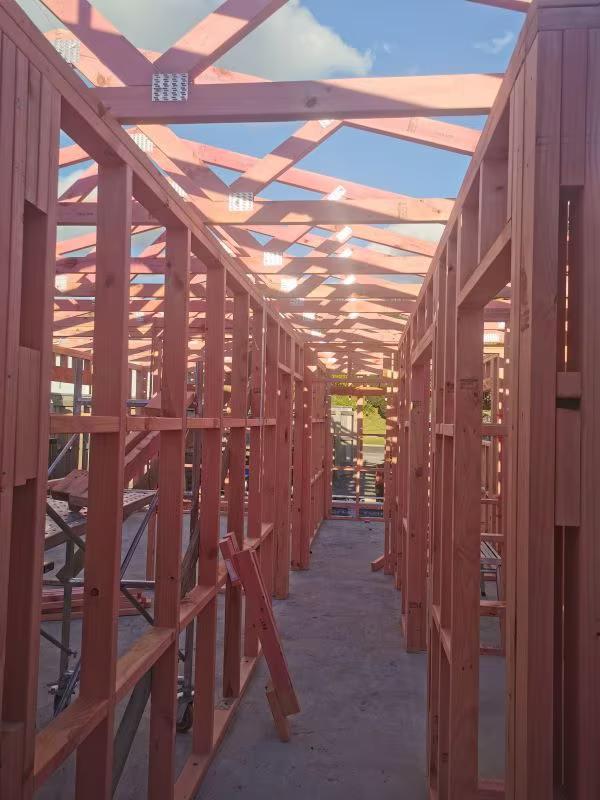
Where are construction workers coming from, and heading to?
Construction plays a critical role in the economy, contributing nearly one in ten jobs in the year to March 2023 and contributing 6.3% of total GDP. To say that 2024 has been tough on both construction workers and employers is putting it mildly, with employment down 5.2%pa in August 2024, second only behind administration and support services.
In this article we use Stats NZ’s employment stocks and flows series to understand where construction workers typically come from, and where they head after construction. Then, we look at how the downturn in construction employment has disrupted these flows.
Construction employment has been hit hard in 2024
Stats NZ’s employment stocks and flows series shows around 209,000 people employed (also known as the employment stock) in construction in August 2024, down 5.2%pa, or around 11,500 fewer workers (see Chart 1).
Where have construction works come from, and where are they going?
The rate at which people leave an industry, also called turnover, is important when evaluating an industry’s labour needs. Stats NZ’s employment stocks and flows series can break down flows of workers into three groups:
- Entering the construction industry from a different industry (or exiting construction to go to a different industry)
- Entering the construction industry from a benefit (or exiting construction to go on a benefit)
- Entering the construction industry from other sources, which includes migrant arrivals and young people entering the labour force (or exiting for retirement or to depart New Zealand)
Note that this data is experimental, and that people can enter and leave an industry multiple times. This classification is based on an individual’s primary income – reflecting that people can earn income from multiple sources – classifying them according to their primary income source.
People are leaving construction in droves in 2024 compared to 2022
The decline in construction employment has largely manifested through other flows turning further negative. Chart 2 shows that the construction industry lost a net 14,500 people to other flows in 2022, rising to a net 18,700 loss in 2024. This likely includes fewer school leavers entering the industry, more older workers retiring, more workers leaving to go overseas, and fewer migrant workers arriving from overseas.
While other flows turned further negative, different industry and benefit flows also reduced, but remained positive. The net number of workers from other industries entering construction eased from 8,500 in 2022 to 2,600 in 2024. The net number of workers coming from a benefit into construction eased from 6,000 to 2,000. We would expect a pullback in construction employment to drive lower net inflows, but it is remarkable that these flows have not turned negative. The fact that construction is still gaining workers on net from different industries and benefits goes to show just how powerful migration (and to a lesser degree new entrants and retirement) is at helping the supply of workers balance in response to changing demand for workers.
More beneficiaries find work in construction then come on benefit from construction
The fact that net flows from benefits to construction employment are still positive is even more remarkable when we consider that the number of people on benefits is rising. Looking at the gross flows beneath this net result, Chart 3 shows that the number of people moving from construction employment to benefits has barely increased, from 3,900 in 2022 to 4,200 in 2024. This could reflect that construction workers who find themselves out of work are working hard to find new opportunities before going onto a benefit, whether that be alternative jobs in New Zealand, or heading overseas.
The number of people moving from a benefit into construction employment has eased from 8,800 in 2022 to 6,200 in 2024, likely reflecting a reduction in construction job opportunities. Employers are also less likely to ‘take a chance’ on someone coming off a benefit, particularly if they don’t have all of the requisite skills and experience, during a downturn when it is easier to find labour.
Where are construction workloads heading?
The construction industry has had sustained growth over the past decade, but now we are seeing workloads transition to lower, but still historically elevated levels. The outlook for civil construction is stronger, led by infrastructure investment. By comparison workloads are looking softer for residential and non-residential building, so some workers may need to transition to other areas within the construction industry.
Some bounce back in residential and non-residential construction is to be expected as broader economic conditions improve, but this may not bring us back to these sub-industry’s post-pandemic peaks. However, given the construction industry’s scale, there will be strong demand for workers over the medium to long term from turnover and retirement of existing workers, coupled with changing skill needs as civil construction grows.




























